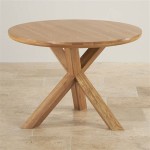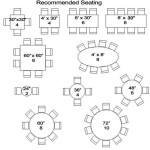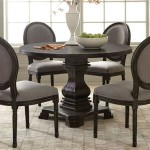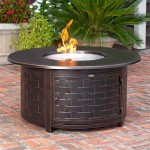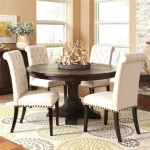Who Sits At The Head Table: A Wedding Seating Guide
The head table at a wedding reception, also frequently referred to as the bridal table, is a focal point, visually and symbolically. Determining who occupies these coveted seats can be a delicate balancing act, often requiring careful consideration of family dynamics, relationships, and personal preferences. Understanding the traditional customs, variations, and modern approaches to head table seating is crucial for ensuring a smooth and respectful reception.
The primary function of the head table is to honor the bridal party and immediate family who have played significant roles in the couple's lives and the wedding planning process. These individuals are typically the ones who will offer toasts, participate in special dances, and generally contribute to the celebratory atmosphere. The placement at the head table signifies their importance and provides them with a central location to engage with the couple and other guests throughout the evening.
While the traditional arrangement has been the standard for many years, contemporary couples are increasingly adopting alternative seating arrangements that better reflect their unique circumstances and relationships. This article will explore the traditional head table setup, common variations, and factors to consider when making seating decisions.
Traditional Head Table Seating: A Formal Arrangement
The classic head table arrangement is linear, typically positioned at the front of the reception venue, providing optimal visibility for all guests. The bride and groom occupy the central seats, with their respective attendants and family members seated on either side. The traditional configuration follows a strict order of precedence.
Starting from the bride's right sits the groom. To the groom's right, the best man is typically seated. Following the best man, the groom's male attendants (groomsmen) are seated in order of their relationship to the groom, if applicable (e.g., brothers, close friends). After the groomsmen, the groom's father traditionally sits, followed by other extended family members or close family friends should space allow.
On the bride's left sits the maid (or matron) of honor. To the maid of honor's left, the bride's female attendants (bridesmaids) are seated in order of their relationship to the bride, similar to the groomsmen. Subsequently, the bride's mother traditionally occupies the next seat, also followed by extended family or close family friends if space permits. Traditionally, the bride's father would be seated at a host's table with other family members, since it was understood he was hosting the wedding.
This arrangement emphasizes the bride and groom as the central figures, flanked by their closest supporters and family members. It provides a structured and formal atmosphere, signaling the traditional values often associated with weddings. However, it's crucial to acknowledge that this model may not be suitable for all couples or family dynamics. Factors like divorced parents, blended families, and same-sex couples necessitate adaptations to this traditional setup.
It's also important to consider the comfort of those seated at the head table. Long receptions can be taxing, and individuals who are less comfortable or familiar with each other may find the experience less enjoyable. Open communication with key members of the wedding party and family is vital for addressing any concerns or preferences regarding seating arrangements.
A key consideration for this setup is space. Depending on the size of the bridal party, the head table can become quite long, potentially limiting interaction and creating a visual barrier between the couple and their guests. Smaller weddings may opt for a more intimate arrangement to foster a sense of connection and inclusivity.
Variations on the Traditional Head Table: Addressing Modern Nuances
In response to evolving family structures and personal preferences, several variations on the traditional head table have emerged. These alternatives aim to be more inclusive, comfortable, and reflective of the couple's values and relationships. One common modification involves including both sets of parents at the head table.
Including both sets of parents at the head table can foster a sense of unity and collaboration, particularly in situations where the families are close. This arrangement typically involves placing the bride and groom in the center, flanked by their respective parents. The bridal party then sits on either side of the parents, maintaining a balance and symmetry. This variation is particularly suitable for couples who value family harmony and wish to express gratitude to both sets of parents for their support.
Another common variation involves a "sweetheart table," where only the bride and groom are seated. This arrangement creates an intimate space for the couple to connect and enjoy their first meal as a married couple. It also allows them to mingle with guests more freely throughout the reception, as they are not confined to a large table. The bridal party is then seated at tables closer to the head table, ensuring they remain integral to the celebration.
For same-sex couples, the head table arrangement can be tailored to reflect their individual preferences and relationship dynamics. There are no inherent gender roles or traditional expectations to adhere to, allowing for greater flexibility in seating arrangements. Common approaches include seating both sets of parents at the head table, creating a sweetheart table, or arranging the bridal party symmetrically on either side of the couple.
Blended families present unique challenges when it comes to head table seating. Divorced parents, step-parents, and step-siblings can create complex dynamics that require careful consideration. The goal should be to create a comfortable and respectful environment for all involved. Open communication with all family members is crucial for addressing any concerns or potential conflicts. In some cases, separate tables for each family unit may be the most appropriate solution, ensuring everyone feels valued and included.
The choice of whether to include spouses or partners of bridal party members at the head table is another common consideration. While traditionally, only single members of the bridal party were seated at the head table, modern etiquette often encourages including significant others to avoid feelings of exclusion. If space allows, incorporating spouses or partners can enhance the overall experience and foster a more inclusive atmosphere. However, if space is limited, it may be necessary to seat them at tables closer to the head table to maintain a sense of connection.
Factors to Consider When Planning Head Table Seating
Beyond tradition and variations, several practical factors should influence the final head table seating arrangement. These factors include the size of the venue, the number of guests, the family dynamics, and the couple's personal preferences. A thoughtful and considerate approach is essential for ensuring a positive experience for all involved.
The size and layout of the reception venue can significantly impact the head table seating arrangement. Smaller venues may necessitate a smaller head table or a sweetheart table to maximize space and facilitate guest flow. Larger venues may allow for a more elaborate head table setup, accommodating a larger bridal party and family members. The location of the head table within the venue should also be considered, ensuring optimal visibility and accessibility for all guests.
The number of guests attending the wedding will also influence the seating arrangements. Larger weddings typically require more tables and seating options, potentially allowing for greater flexibility in head table placement. Smaller weddings may benefit from a more intimate and inclusive seating arrangement, such as a family-style table or a sweetheart table. It's important to strike a balance between honoring the bridal party and family members while ensuring all guests feel comfortable and included.
Family dynamics are often the most sensitive and challenging aspect of head table seating. Divorced parents, blended families, and strained relationships can create complex situations that require careful consideration. Open communication with all family members is essential for addressing any concerns or potential conflicts. The goal should be to create a respectful and comfortable environment for all involved, even if it requires compromising on traditional customs or personal preferences.
Ultimately, the head table seating arrangement should reflect the couple's unique values and relationships. There is no one-size-fits-all solution, and the most important factor is to create a seating plan that feels authentic and meaningful to the couple. Consulting with wedding planners, family members, and the bridal party can provide valuable insights and perspectives, ensuring a thoughtful and considerate decision-making process.
It is also prudent to have a backup plan in case of unexpected changes or last-minute cancellations. Having alternative seating arrangements in mind can help mitigate any potential disruptions and ensure a seamless reception experience. Flexibility and adaptability are key to navigating the complexities of wedding planning and ensuring a positive outcome for all involved.

Arranging Your Wedding Seating Plan And Top Table

Who Sits At The Head Table During Wedding Reception

How To Seat The Bridal Table At Your Reception With Graphs Queensland Brides

Wedding Etiquette Who Sits At The Bridal Table

Wedding Head Table Seating Who Gets A Spot

Who Sits At The Head Table Wedding Reception Weddings

Who Sits At The Head Table Wright House

Wedding Head Table Seating Who Gets A Spot

Ask The Coordinators Head Table Dimensions Castle Farms

The Wedding Top Table Layout
Related Posts


